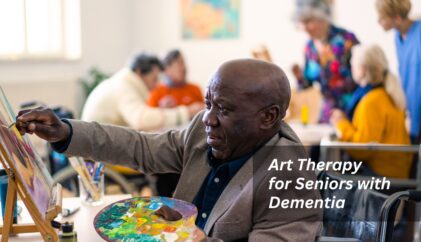
Most effective anxiety treatment for many people is counselling. Anxiety therapy can help you uncover the underlying causes of your worries and fears.
The most effective anxiety treatment for many people is counseling. Anxiety therapy can help you uncover the underlying causes of your worries and fears.
Anxiety is a naturally occurring emotion that we all experience. It alerts us to the environment and our surroundings so that we can act accordingly (fight, flight, freeze, or fold). Ideally, it would come and go once we have processed and addressed the threat; however, for many, it is not that simple.
For some, we get stuck in an anxious loop that never ceases, or in some cases, may build. For these individuals, it is important to know that they do not have to live trapped in this loop, and seeking therapy can aid in breaking the cycle.
Experiences of anxiety are vast in numbers and can vary based on the root cause, triggers, or focus of the anxiety, symptoms, severity, duration, and physical manifestations.
For that reason, anxiety therapy should be individualized on a case-by-case basis. Some would benefit from more extreme intervention, while others simply need a supportive space to process.
Some will need the support of medication, while others will just need to learn effective coping techniques. Thus, finding a therapist who is willing to explore and collaborate alongside you is extremely beneficial.
The therapeutic alliance is often thought to be a central factor related to successful treatment outcomes across treatment modalities, so allow yourself the time to find a therapist you feel connected to. Additionally, it would serve you well to remain flexible in trying things that may be outside your comfort zone.
Types of Therapy for Anxiety
When it comes to treating anxiety, there is no one-size-fits-all solution. Choosing the right anxiety treatment depends on the individual's symptoms and their severity. Sometimes, treatment will need to be tailored to incorporate elements of different therapies.
The following therapeutic techniques are common for treating anxiety:
Cognitive Behavioral Therapy (CBT)
Due to its extensive research and proven effectiveness, CBT is the most commonly used approach to treat anxiety and anxiety disorders. Using CBT for anxiety helps individuals identify negative behavior and thinking patterns and how to replace them with healthy ones. Individuals will also develop valuable skills to cope with stressful situations.
Exposure Therapy
A form of CBT, exposure therapy helps people confront their fears and conquer them. During sessions, a therapist gradually introduces stressful or frightening stimuli to the patient and reprograms the brain to reduce fear reactions. This technique also promotes new ways of thinking and helps people learn important coping skills. The different types of exposure include in-person exposure, imaginary exposure, and virtual reality exposure.
Exposure therapy can also be used to treat specific phobias, such as a fear of leaving the house, fear of flying in an airplane, or fear of being in crowded places. This technique is also applicable to more general situations, such as separation anxiety, social anxiety, panic disorders, and PTSD.
Exposure response and prevention therapy (ERP), a variant of exposure therapy, is sometimes used to treat anxiety related to OCD. The therapist will help the individual acknowledge and confront their fears, then treat the related obsessions and compulsions.
Acceptance and Commitment Therapy (ACT)
Another effective treatment for anxiety is ACT. This method utilizes acceptance and mindfulness techniques to help individuals identify their values and act accordingly. Treatments for social anxiety and OCD have been effective with ACT.
A combination of ACT and other treatment methods may be used to treat specific symptoms associated with anxiety. An example of this would be generalized anxiety that prevents a person from engaging with others and participating in specific activities.
Dialectical Behavioral Therapy (DBT)
Dialectical behavior therapy (DBT) is a form of cognitive behavioral therapy effective for treating anxiety. The technique aims to teach people how to live in the present, handle stress more effectively, manage their emotions, and strengthen their relationships.
Originally designed to treat borderline personality disorder (BPD), DBT is now used to manage a variety of mental health conditions. This technique works well for people who struggle with emotional regulation or engage in self-destructive behavior, such as substance abuse or eating disorders. DBT can also be used to treat post-traumatic stress disorder (PTSD), panic disorders, and OCD.
Eye Movement Desensitization and Reprocessing (EMDR)
Through EMDR, individuals can reprocess traumatic life experiences through the brain's natural healing process. During therapy, a therapist leads the patient through bilateral stimulation of the brain using specific eye movements, tones, or tapping to reconstruct traumatic memories and reduce the physical and emotional response to them.
EMDR works well for anxiety that's related to trauma, such as post-traumatic stress disorder or certain phobias. Using this technique can also be helpful for dealing with life events that may have caused the development of panic disorders or generalized anxiety disorder. Since EMDR focuses on reprocessing specific life events, it may not be appropriate for all forms of anxiety.
Interpersonal Therapy (IPT)
During IPT, patients are primarily taught how to improve their interpersonal relationships and social functioning to alleviate stress and anxiety. In IPT, a therapist will work with the individual to address their specific relational concerns. This can include conflict with family members, grief, a change in work or social obligations, and general difficulties with interpersonal relationships.
Originally developed to manage depression, IPT can also be beneficial for people who experience relationship difficulties due to anxiety, such as social anxiety. This technique is also commonly used for people whose anxiety results from interpersonal struggles, such as panic disorders caused by fear of rejection.
What Does Treatment Look Like Overall?
With the vast array of anxiety-related diagnoses, it is important to note that specific interventions will vary based on the individual needs.
For example, interventions that are used in the treatment of obsessive-compulsive disorder will be different from those with anxiety or panic attacks. But overall, therapy will approach your anxiety in a few different ways.
Unlike medication, which often treats the symptoms, therapy will dig deep into the roots and cause of your anxiety, whether it is manifested in behaviors or thoughts. Looking for learned patterns or common themes that could bring self-awareness and aid in reframing certain situations.
This could help you look at certain situations with a less fearful perspective or redistribute your attention to more important or realistic things. This could go deep into your childhood or be connected to a major event in your life, depending on your own experience.
Anxiety often dominates the mind through our thoughts. This can present as rumination, intrusive thoughts, and negative cognition, and can even distort our perception of reality. When anxiety controls our mind it can feed us lies under the guise of truth.
Differentiating the lies from reality is a battle that comes much easier after we become more aware of ourselves and with support from a therapist. Changing our thought patterns can arguably be the hardest battle but holds the greatest rewards and can offer internal peace and relief; for our thoughts have a direct line to the emotions we feel.
Anxiety is deeply rooted in our sympathetic nervous system and can be extremely taxing when constantly activated. Gaining an understanding of the early warning signs of our body can give us back control, by intervening before the anxiety gets out of hand.
It also opens the door to techniques that subside the sympathetic nervous system and can combat anxiety on a physical level (breathing techniques, laughter, progressive muscle relaxation, or guided imagery).
Getting to know the idiosyncrasies of your personal experience with anxiety will allow for the discovery of ways to intervene and cope. For some, implementing breathing techniques once they begin to feel those butterflies in their stomach will suffice.
For others, pushing themselves outside of their comfort zone and exposing themselves to their triggers while practicing cognitive restructuring will provide the most growth and relief. Perhaps channeling the anxiety into more creative and expressive avenues will act as an outlet to let go of the internal tension.
Therapy provides a space that is individualized to your needs and allows for the exploration of what will work specifically for you. This entire process varies in length and time depending on your needs, but usually, improvement is seen around the 8-10 session mark.
Anxiety can be crippling, exhausting, and overwhelming, but you are not alone in what you are experiencing. Anxiety overall is being experienced at higher levels and for longer durations now more than over.
With the global pandemic, political tension, and acts of violence in various settings, we are all feeling the impact and effects of anxiety, worry, and fear. But there is help out there and no one has to suffer alone. Reach out for help and a mental health professional will be there to support you on every level.
CHE Behavioral Health Services offers FREE Mood Screenings with a licensed therapist and no obligations. Easy online scheduling and therapy is provided under most major insurances or with a self-pay care plan option.
Annika Lundin
Doctoral Student in Clinical Psychology
California School of Professional Psychology
Alliant International University, Los Angeles



